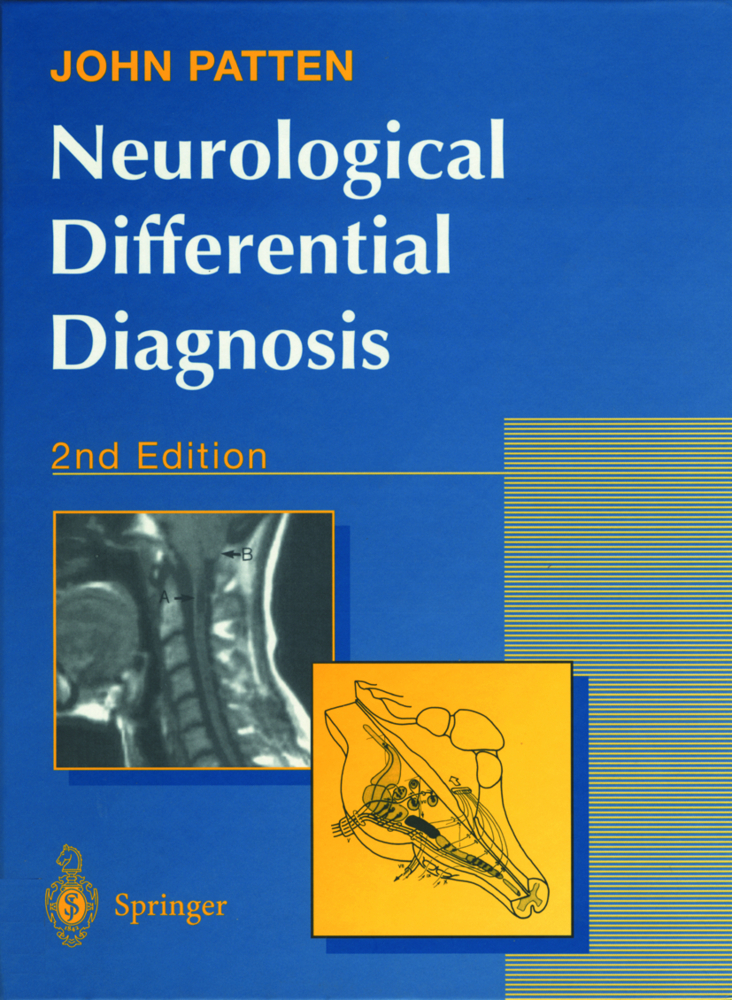Neurological Differential Diagnosis
Neurological Differential Diagnosis
The majority of doctors are ill at ease when confronted by a patient with a neurological problem. Candidates for qualifying examinations and higher diplomas dread that they will be allocated a neurological 'Iong case'. This is a serious reflection on the adequacy of training in neurology. It is still possible in some medical schools for a student to go through the entire clinical course without an attachment to the neurological unit. Increasing competition for teaching time has led to the situation where in most US medical schools, and at least one new medical school in the UK, a two-week c1inical attachment to the neurology service is considered adequate. Those fortunate enough to attend a postgraduate course find a minimum of 3 months' intensive training is necessary before any confidence in tackling a neurological problem is achieved. Unfortunately, neurological textbooks seldom seem to recognize the intensely practical nature of the subject. There are many short texts that achievebrevity by the exclusion of explanatory material; these are difficult to read and digest. At the opposite extreme are the neurological compendia, often unbalanced by excessive coverage of rare diseases and all based on the assumption that patients announce on arrival that they have a demyelinating, heredofamilial, neoplastic etc. disorder. These texts are useful only to those who already have a good working knowledge of neurological diseases.
3 Vision, the Visual Fields and the Olfactory Nerve
4 Examination of the Optic Fundus
5 The Third, Fourth and Sixth Cranial Nerves
6 The Cerebellopontine Angle and Jugular Foramen
7 Conjugate Eye Movements and Nystagmus
8 The Cerebral Hemispheres: the Lobes of the Brain
9 The Cerebral Hemispheres: Vascular Diseases
10 The Cerebral Hemispheres: Disorders of the Limbic System and Hypothalamus
11 The Brain Stem
12 The Extrapyramidal System and the Cerebellum
13 The Anatomy, Physiology and Clinical Features of Spinal Cord Disease
14 Metabolic Infective and Vascular Disorders of the Spinal Cord
15 The Spinal Cord in Relation to the Vertebral Column
16 Diagnosis of Cervical Root and Peripheral Nerve Lesions Affecting the Arm
17 Nerve Root and Peripheral Nerve Lesions Affecting the Leg
18 Diseases of Muscle and the Muscle End-Plate
19 Peripheral Neuropathy and Diseases of the Lower Motor Neuron
20 Headache
21 Facial Pain
22 Attacks of Altered Consciousness
23 Trauma and the Nervous System
24 Neurological Complications of Systemic Disorders
Suggestions for Further Reading and Study.
1 History Taking and Physical Examination
2 The Pupils and Their Reactions3 Vision, the Visual Fields and the Olfactory Nerve
4 Examination of the Optic Fundus
5 The Third, Fourth and Sixth Cranial Nerves
6 The Cerebellopontine Angle and Jugular Foramen
7 Conjugate Eye Movements and Nystagmus
8 The Cerebral Hemispheres: the Lobes of the Brain
9 The Cerebral Hemispheres: Vascular Diseases
10 The Cerebral Hemispheres: Disorders of the Limbic System and Hypothalamus
11 The Brain Stem
12 The Extrapyramidal System and the Cerebellum
13 The Anatomy, Physiology and Clinical Features of Spinal Cord Disease
14 Metabolic Infective and Vascular Disorders of the Spinal Cord
15 The Spinal Cord in Relation to the Vertebral Column
16 Diagnosis of Cervical Root and Peripheral Nerve Lesions Affecting the Arm
17 Nerve Root and Peripheral Nerve Lesions Affecting the Leg
18 Diseases of Muscle and the Muscle End-Plate
19 Peripheral Neuropathy and Diseases of the Lower Motor Neuron
20 Headache
21 Facial Pain
22 Attacks of Altered Consciousness
23 Trauma and the Nervous System
24 Neurological Complications of Systemic Disorders
Suggestions for Further Reading and Study.
Patten, John P.
| ISBN | 978-3-540-19937-3 |
|---|---|
| Artikelnummer | 9783540199373 |
| Medientyp | Buch |
| Auflage | 2nd ed. corr. repr. |
| Copyrightjahr | 1995 |
| Verlag | Springer, Berlin |
| Umfang | 449 Seiten |
| Abbildungen | XIV, 450 p. |
| Sprache | Englisch |









